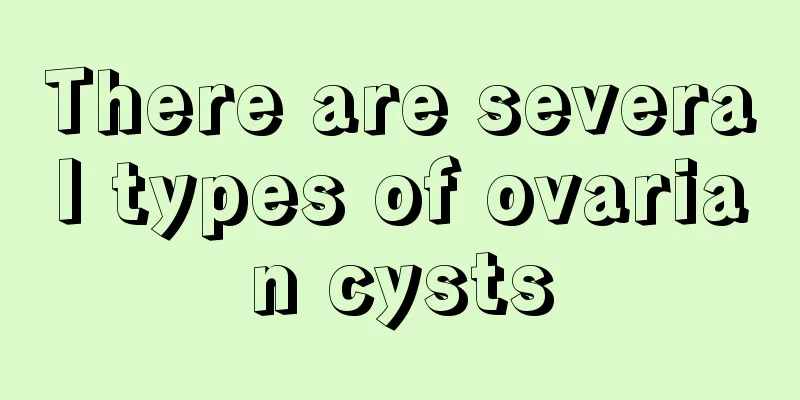There are several types of ovarian cysts

|
Ovarian cysts are a common disease among women. When suffering from this disease, symptoms such as lower abdominal pain, vaginal bleeding, and lower abdominal pain may occur during bowel movements. And ovarian cysts can be divided into several types, such as chocolate cysts, functional cysts, hemorrhagic cysts, etc. No matter which type, the impact on the human body is relatively large, and people need to understand it. Here we will introduce several types of ovarian cysts. Ovarian cyst is a common tumor of the female reproductive system. Since patients often have no symptoms in the early stages, diagnosis is difficult, resulting in poor clinical treatment results. So, what are the effects of ovarian cysts? Experts point out that the impact of ovarian cysts is mainly reflected in causing female infertility or early menopause. Clinically, ovarian cysts can be roughly divided into 7 types:
1. Chocolate cyst: Endometriosis grows in the ovaries, forming a large amount of sticky brown and chocolate-like liquid. 2. Functional cysts: They occur in women of childbearing age during the ovulation cycle. They are caused by an abnormal amount of fluid accumulating in the follicles or corpus luteum. Although they can sometimes be very large, they usually disappear on their own within three months regardless of whether medication is used or not. 3. Teratoma: This is a very special cyst. It may be caused by a problem in cell differentiation during the embryonic period. It will produce hair, teeth and some oil accumulation in the ovary. So it is best to remove it early. 4. Hemorrhagic cyst: Follicular cyst and corpus luteum cyst grow too rapidly, causing the ovarian tissue to be pulled and bleed. When blood has no outlet, it accumulates in the ovary and becomes a hemorrhagic cyst. It usually goes away on its own but it takes a long time. Medication can be taken to relieve symptoms. In a few cases, patients with more severe symptoms may require resection. 5. Ovarian cancer: Generally speaking, middle-aged and elderly women are more likely to get epithelial cell cancer, which has a higher chance of recurrence and a poor prognosis. 6. Serous epithelial cysts and mucinous epithelial cysts: Because the serous cells and mucinous cells with secretory functions are buried in the ovaries after ovulation, they continuously secrete fluid to form cysts. Requires surgical removal. 7. Endometrioid tumor: The tumor has a smooth surface and is often unilocular. Its inner wall is composed of a layer of tall columnar epithelium that is very similar to the endometrium. |
<<: Is pelvic closure surgery done once?
>>: Will ovarian cysts cause abdominal bloating?
Recommend
What fruits are good for your health when you have your period?
For women, body care during menstruation is parti...
What alkaline fruits are good for conceiving a boy?
We all know that if you want to have a boy, the a...
What to do if there are lumps under the armpits during breastfeeding
For women, the older they get, the more they shou...
What is the disease of protein in female urine
The biggest harm of proteinuria is to erode kidne...
Can pregnant women eat fermented milk?
After a woman gives birth, she must pay more atte...
Advantages of physical therapy for cervical erosion
Cervical erosion is a particularly serious gyneco...
Why do I hiccup during pregnancy?
In the early stages of pregnancy, although the ph...
How can middle-aged women exercise well?
In recent years, with the increase in people'...
Complete picture of female herpes
Herpes generally refers to herpes, which is mainl...
Does frequent uterine contractions have any effect on the fetus?
Many pregnant women know that when uterine contra...
How do women maintain their uterus after giving birth?
I believe every woman knows the importance of the...
Why do women tend to grow this disgusting thing when they are sensitive?
There are many reasons that cause acne in life, a...
What are the examinations after ectopic pregnancy
For women, no one wants to have an ectopic pregna...
The cause of nipple granules in pregnant women
In fact, in daily life, most pregnant women do no...
Symptoms of follicular atrophy, please pay attention to these manifestations
The so-called female follicular atrophy manifests...









